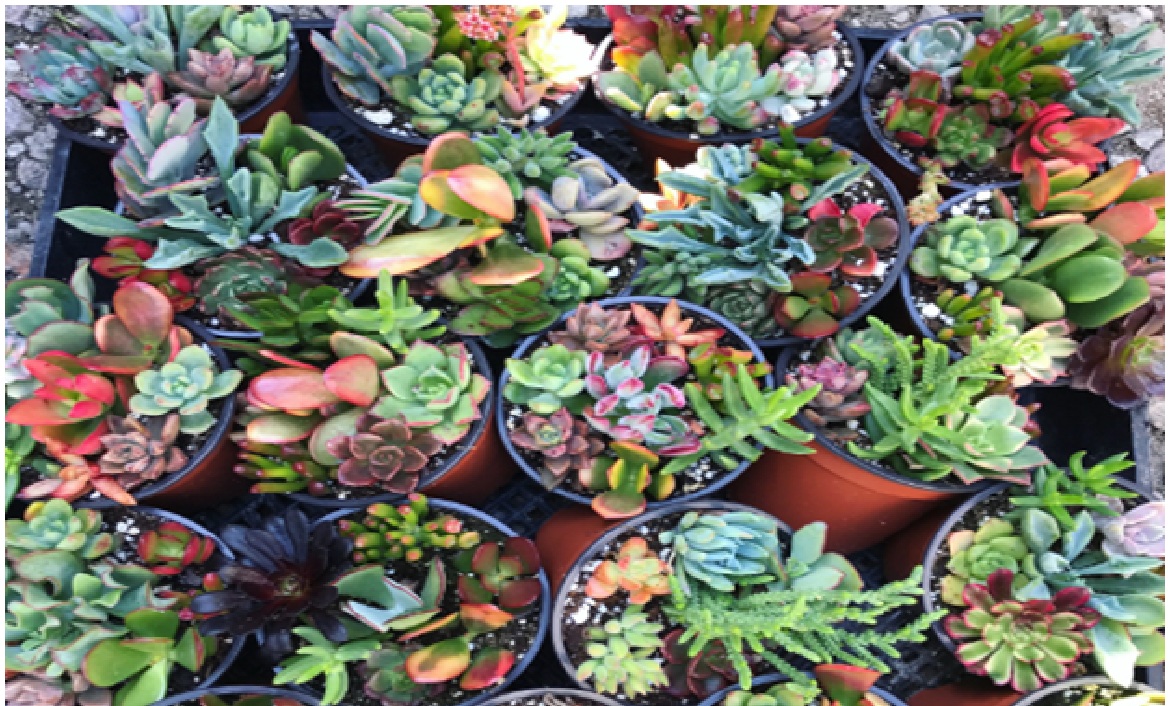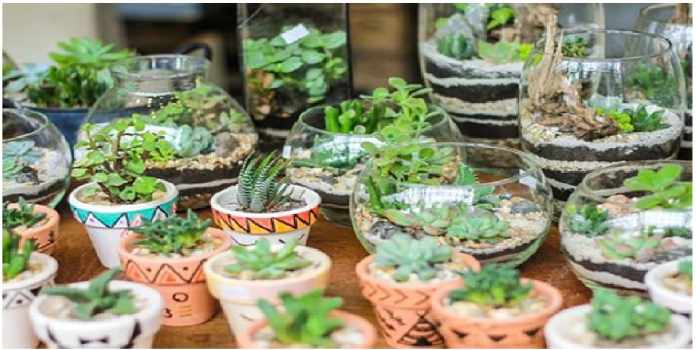some of the main advantages of growing succulents plants are that they are low maintenance, thousands of species to choose from, look gorgeous as decorative items, bring life to homes, and make them feel cozy. These are some of the reasons why they are perfect for growing and have indoors. Here is How to care for succulents at home.
We have learned some things that we believe are important to grow and care for white spots on succulents indoors successfully from our years of experience.
When we started in the world of succulents, we used to go shopping in nurseries and plant stores where we chose species based solely on their appearance: their colour, shape or size.
This is a very common mistake among beginners, not so beginners, because after taking the succulents home, some begin to look bad, stretch or etiolate, lose colour, and even die.
Since we don’t want you to make the same mistakes we did initially, we would like to share a series of tips that we would have wanted to know a lot earlier. These tips, we are sure, will help you grow and grow your succulents healthy and beautiful indoors.
Table of Contents
How to care for succulents at home or indoors
Choose species of succulents of inner.
Choosing the appropriate species for the conditions in which you are going to have your succulents is essential. Before going to buy, analyze the characteristics of the space where you will place the new plants.
In order to avoid white spots on succulents as well as other issues, you should look, for example, at the brightness of the spaces in your house, the hours of most significant sun incidence, the temperature, the ventilation, etc.
Look, for example, at the brightness of the spaces in your house, the hours of most significant sun incidence, the temperature, the ventilation, etc.
Once you are clear about all these points, find out which species best suit your Succulent Market conditions.

In general, we recommend some species that do very well indoors succulents for sale: Echeveria Purple Pearl,Echeveria Blue Bird ,Crassula Ivory Tower,Haworthia Cooperi, Kalanchoe Thyrsiflora,Echeveria Brown Rose,Sedum Morganianum (Burro’s Tail), Echeveria Green Pacific, Echeveria Pink Frills, Senecio Stapeliaeformis, Peperomia Axillaris, Haworthia Fasciata Variegata, Echeveria Ebony, Echeveria Perle Von Nurnberg, Echeveria Mexicana, Echeveria Silver Queen, Echeveria Enon, Echeveria Echoc, Pilosocereus Pachycladus, Echeveria Blue Prince among others.
We also suggest that you explain to your plant vendor what your house’s conditions are so that they can advise you appropriately in the choice of species.
Give them lots of light.
Try to give them as much light as you can. Place your succulents in the brightest spaces in your home, and make sure that the species with the highest light requirements are next to the windows.
Also, keep in mind that some species burn if they receive a lot of direct light for many hours a day and that window glass enhances the sun’s rays.
Important: Illumination varies during the year due to the tilt of the planet. Keep in mind that you should be aware of lighting changes in your home during the year to provide your plants with the best possible lighting.
Use pots with good drainage
Succulents are plants that cannot stand being long in a humid substrate. They rot and die quickly if you leave them with excess water for several days. So that this does not happen, you should choose a pot with drainage, that is, with holes in the base. Thus, excess water escapes through the holes.
Suppose you have a little more experience you can plant in containers without drainage. An exciting option is terrariums.
Use a suitable substrate for succulents and cacti.
To avoid excess water, since indoors it tends to evaporate more slowly than outdoors, in addition to the type of pot, you must take care that your substrate has good drainage.
Succulents and cacti should not be planted in ordinary soil or universal substrate because it remains humid for too long and, in this way, our planet has a greater chance of rotting.
Water a lot, but infrequently
Every time you water your succulents and cacti, you should do it in abundance. Contrary to what is commonly thought or said, they love water.
Water is a fundamental element for your succulents to grow healthy and beautiful, so we recommend that you water them generously. As we’ve explained above, if you have good drainage, you shouldn’t have a problem.
By watering heavily, you ensure that your succulents receive enough water to store on their leaves and stems.
Important: Quantity should not be confused with irrigation frequency.
Irrigation frequency refers to the space between irrigations. It would help if you waited until the substrate is completely dry before watering again. If you are not sure whether you should water or not, it is best not to do it. Succulents handle extended periods without water very well because, during that time, they feed on their reserves, but as you know, if they are soaked for too long, they rot.
Indoors it is advisable to only water the substrate because, otherwise, the water tends to remain stagnant between the leaves, leading to rot and death of our plants.
Control the temperature
Temperature is also a factor to consider when it comes to caring for our succulents indoors correctly. You should avoid exposing your succulents to temperatures that could harm them. For example, don’t place them next to a radiator, fireplace, or any other heat-emitting object that could hurt them.
On the other hand, if you have icy areas in your house, avoid placing your succulents there.
Move and rotate your plants.
One of the most common drawbacks of having plants indoors is that there is usually no room for all of them near the brightest points.
This has a straightforward solution. You can rotate your plants and change their position so that they can all receive enough light for a few hours each day. If you notice that your plants are curving or leaning towards the light sources, you can rotate the pot on its axis to ensure that they maintain an excellent shape.
You can also move them to ensure that the temperature is adequate throughout the year. Or if you see that they need better ventilation. Or if they have a plague and you decide to quarantine them. Even to water them, you can put them inside the bathtub if it is easier for you to do so.
We encourage you to experiment in your home and, little by little, discover which place is best for each of your plants.
We hope that all these tips will help you to care for your succulents at home properly.
















